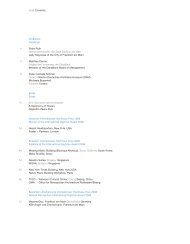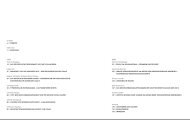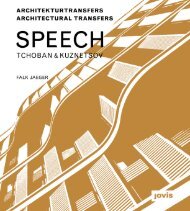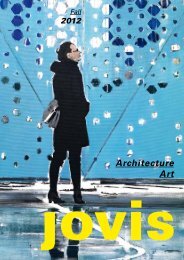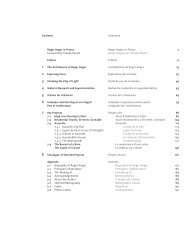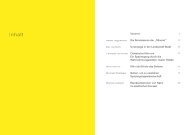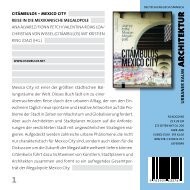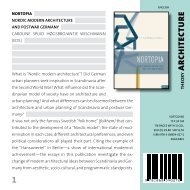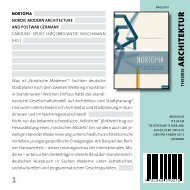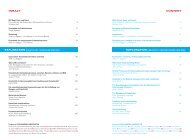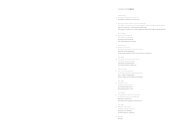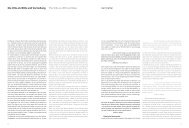Shrinking Cities 2 - JOVIS VERLAG Architektur Fotografie Berlin
Shrinking Cities 2 - JOVIS VERLAG Architektur Fotografie Berlin
Shrinking Cities 2 - JOVIS VERLAG Architektur Fotografie Berlin
You also want an ePaper? Increase the reach of your titles
YUMPU automatically turns print PDFs into web optimized ePapers that Google loves.
AS IF A to Z …<br />
Architecture – as in the case of the new building of the GfZK – is essentially based<br />
in a concept of time. In this concept of time, the only constant is change. Given<br />
cultural, social, political, and economic change, constructing a contemporary<br />
space means to construct the possibility of spatial change. It seems paradoxical<br />
that an awareness of the potential of change anticipates change. The structure<br />
within which changes might occur remains as a constant. In this sense,<br />
space represents an order and, at the same time, changes providing the spatial<br />
order with a program. As the exhibition schedule serves to program time well<br />
in advance of each respective change to the space – implying that each spatial<br />
alteration may be superseded for each successive exhibition – space appears as<br />
a secondary dimension. Space is the medium in which time reveals itself. What<br />
emerges as (a) space appears as the bare present, captured here and now as<br />
a spatio-temporal aperture for the duration of an exhibition – comparable to<br />
photography and its phantasmatic core, capable of purloining a single moment<br />
from the flow of time. Thus, the changeability of the space temporarily captured<br />
evokes notions of presence, contemporaneity, and the aura of an event. Contrary<br />
to expectation, here, the “event” consists of a state in which nothing changes for<br />
a specific period of time. In this sense, architecture is a time machine: it represents<br />
the constant of change while simultaneously eliciting a hiatus – a moment<br />
in time, the architectural “snapshot” of the present.<br />
Visitors are invited to make decisions while on their way through the exhibitions.<br />
The building’s modifiable internal order is designed to offer a variety of<br />
alternative routes through the exhibitions and gallery spaces. The movable walls<br />
make it possible to create varying visual axes – thus introducing the option of<br />
producing different relationships between the artworks and spaces. As a result,<br />
the route chosen by the visitor is decisive for the perspectives and specific ways of<br />
perceiving the spaces and works. Like looking, walking is integral to the production<br />
of meaning. Regardless of whether we stroll, meander or cover a predetermined<br />
distance – walking defines a form of mobility and satisfies a desire for<br />
movement. Here, movement implies no more than expressing mastery over time:<br />
walking is a form of spending time, and the selected form of ambulation defines<br />
the temporal concept from which it departs. Conscious of the fact that the spatial<br />
situations may change, the visitor does not know where the way through the<br />
spaces and exhibitions will lead him/her. Paradoxically, precisely this lack of<br />
knowledge about the spaces demands that we scrutinize them – perhaps only<br />
as an expression of that temporary state when, afraid of losing our way, we seek<br />
orientation. Basically, the architecture prescribes the routes to be taken, knowing<br />
that we may find or leave them.<br />
Cafés take into account that institutions, alongside their core tasks, also fulfill<br />
functions that are primarily concerned with the institution’s cultural embedding.<br />
In this sense, the café is also an institution: it is its host institution’s alter ego,<br />
183<br />
Andreas Spiegl<br />
A<br />
<strong>Architektur</strong> î Architecture<br />
Besucherinnen und Besucher î Visitors<br />
B<br />
C<br />
Cafés



